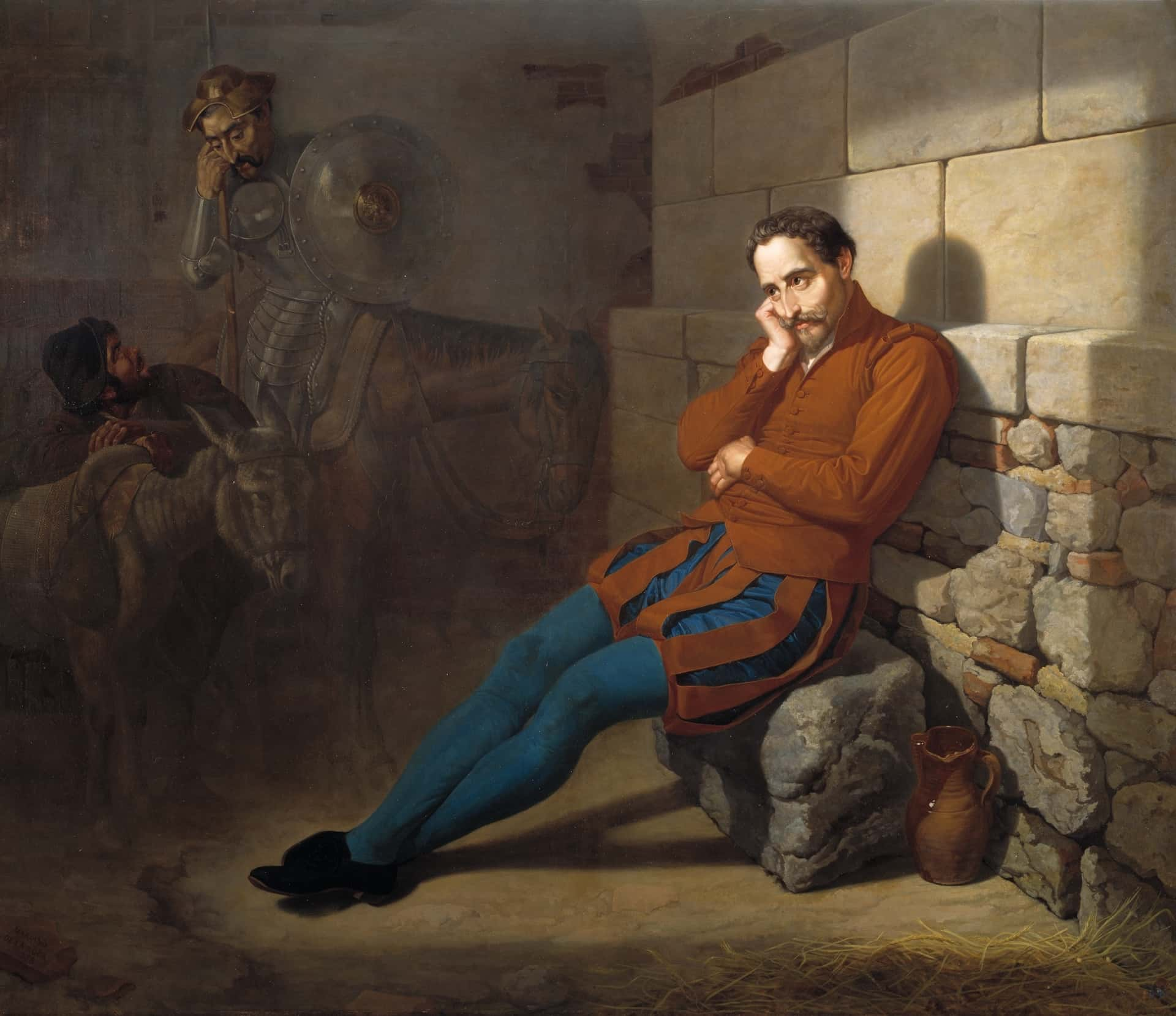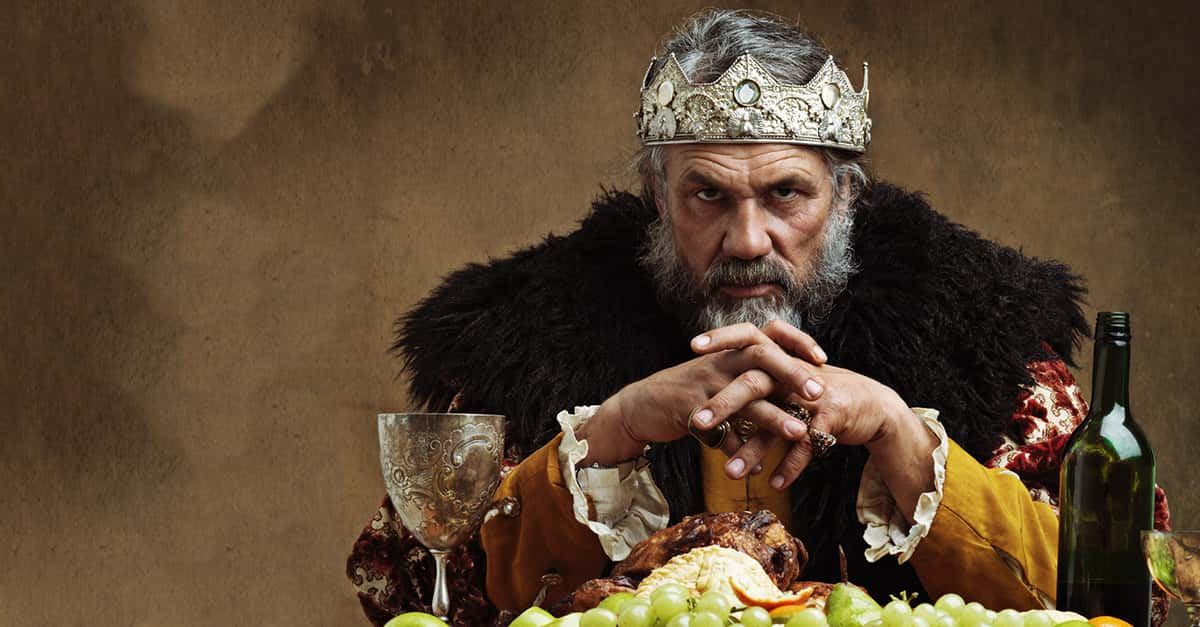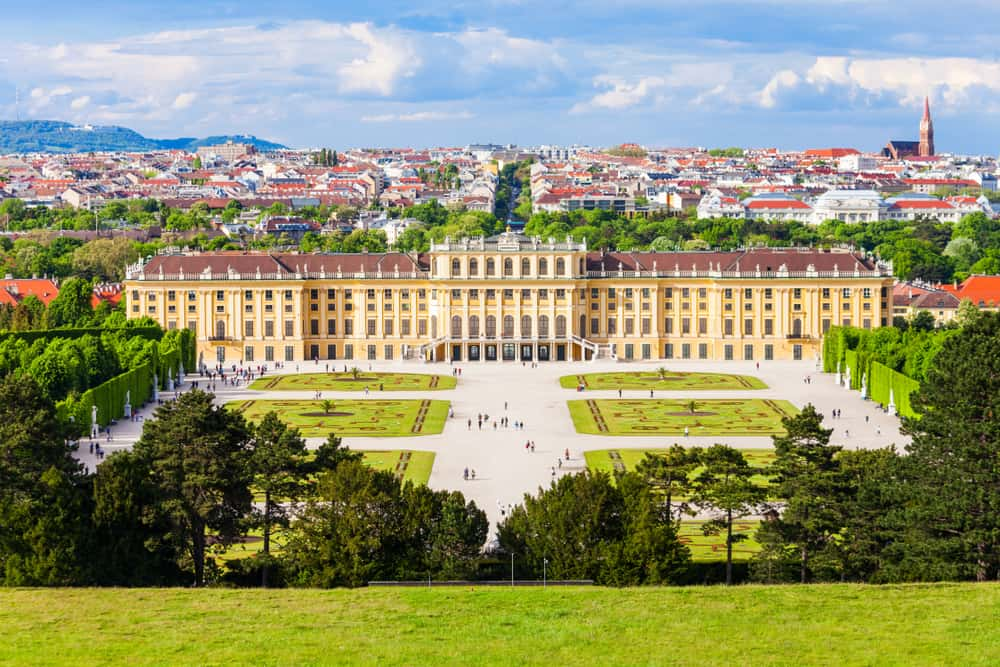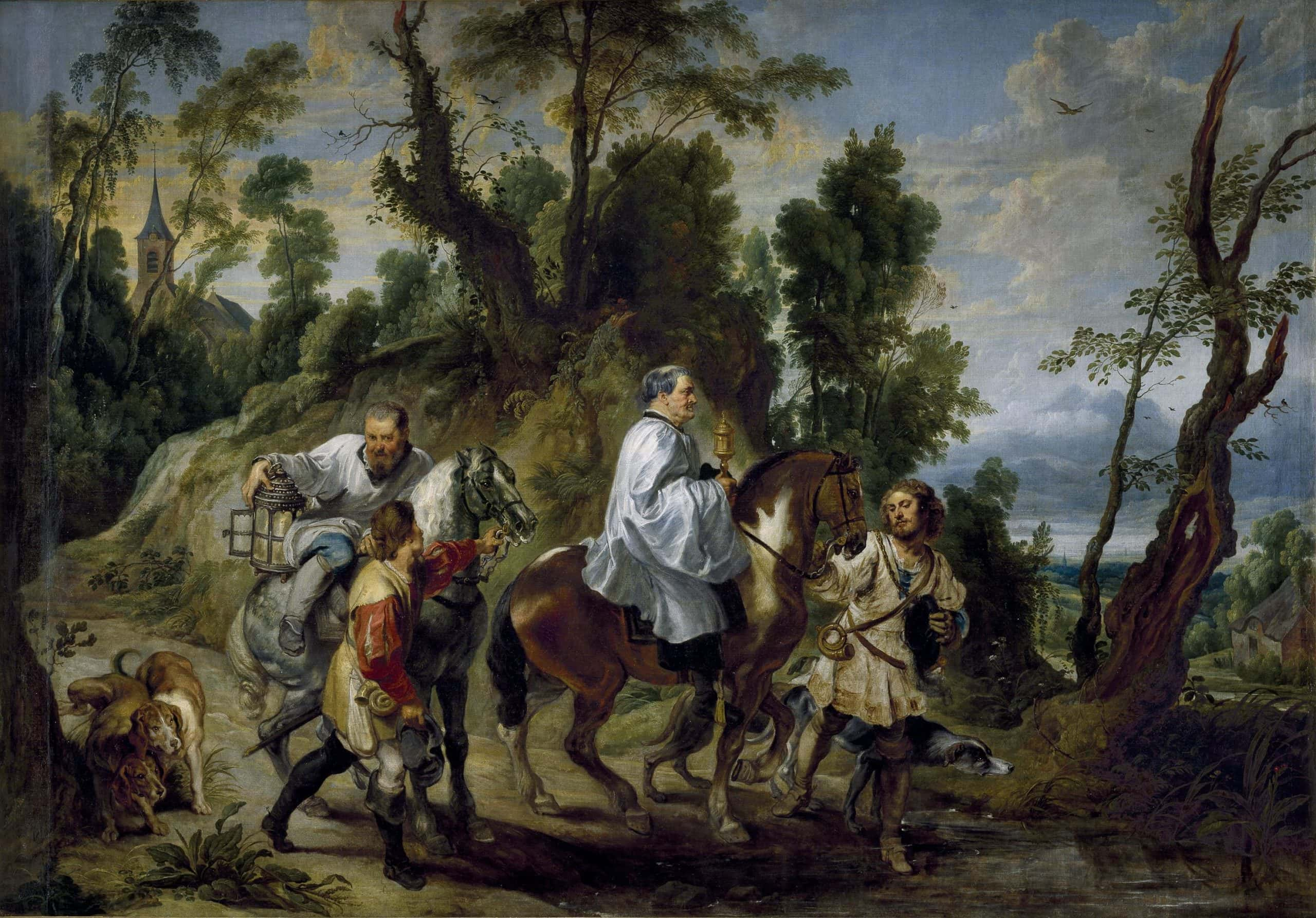They may be one of history’s great empires that have flown under the radar, but the Habsburgs shaped Europe and had a lasting cultural influence over the continent. Let's find out more about them.
1. Castle Beginnings
The beginning of the Habsburgs come with the building of the Habsburg Castle in Switzerland. Built on the Aar, the largest tributary of the High Rhine river, Otto II was the first to take on the name of the castle when he created the House of Habsburg, and eventually Rudolf I moved the house to Austria in 1276 when he established the Habsburg dynasty.

2. Brotherly Rule
During the early years of Habsburg rule, there was a period of time where brothers would often co-rule together.
3. Open Seat
The Great Interregnum was the period of crisis when the Holy Roman Empire and the German Kingdom did not have a king. This gap lasted for some time—until the Habsburgs rose to power.
4. Good Timing
The rise of the Habsburg empire occurred alongside the Renaissance, and as the humanistic ideas spread to northern Europe, the Habsburg rulers embraced them. Emperor Frederick III, who was responsible for consolidating rule in Germany and expanding the empire eastward, named the Italian scholar Enea Silvio Piccolomini as not only his secretary but also the official poet laureate of the empire.
5. Imperial Poetry
Through the Habsburg Empire, Austria ascended to power by strategizing through marriages, spawning the Latin saying “Bella gerant alii, tu felix Austria nube” which translates to “While others engage in battles; you, fortunate Austria, wed".
6. Married With Empire
The Habsburgs came to dominate Europe as a powerful empire in the 16th century, largely due to the efforts of Maximillian, who was a highly skilled matchmaker, and who was able to peacefully raise his family to the throne of Spain, Hungary, and the Holy Roman Empire.
7. Family Divided
In the 16th century, the Habsburgs would become to largest Western European Empire since Rome, but there was always a political division between the Spanish and Austrian branches, a division that would come to be a physical reality by the middle of the 16th century: The capital of the Holy Roman Empire became Vienna, technically separating the Spanish sect of the Habsburgs from the Austrian sect.
8. Too Many Cousins
The Spanish Habsburgs persistently pursued brides from the Austrians, which over time splintered their empire during the Spanish Succession Conflict due to the excessive number of contenders for the throne.
9. Haters Gonna Hate
After their loss in WWI, the successor state of German Austria exiled all remaining Habsburgs in what is known as the Habsburg Law. The law would be repealed in 1935, only to be reintroduced in 1938 by the Nazis. Interestingly enough, the law still remains in place, though it is considered obsolete.

History's most fascinating stories and darkest secrets, delivered to your inbox daily.
10. Bourbon Neat
Following the rise of the Bourbons to power in Spain after the succession conflict, the Habsburgs were scaled down to their territories in Austria, Bohemia, and Hungary, thereby effectively converting them into the Austrian Empire.
11. Manly Man
Nothing is more macho than hunting animals, correct?Well, that’s what the Habsburg royalty believed during the 17th century at least. One king in particular got really good at it: Leopold I. He frequently had a fox enveloped in a blanket while a group of dwarfs would pummel it with sticks until it ceased to be alive. Lovely guy, Leopold.
12. Rudolf the Red Nosed King
The last Habsburg king to hold court in Prague was Rudolf II. Rudolf II liked to release cheetahs onto the streets of Prague, and was an obsessed occultist who engaged in a deep search for the philosopher’s stone in order to gain immortality.
13. What the Future Holds
Rudolf didn’t just practice occultism, he also sought out the most prominent mystics in this region of the world. Everybody’s favorite fortune teller, Nostradamus, even wrote personal horoscopes for him.
14. Karma From A firearm
Franz Ferdinand is renowned today due to the circumstances of his untimely demise, which catapulted the world into WWI. Back in his day, however, he was renowned for hunting animals. During his lifetime, it is estimated that he shot and caused the demise of approximately 300,000 animals. Over 100,000 deer "trophies" adorned his estate. His personal best is reputed to be the elimination of 2,140 animals in a single day.
15. Desperation Stinks
The Habsburgs were so weak during WWI that their emperor Karl I attempted to make a deal with France where he would give the country practically anything they wanted in order to not have his Austro-Hungarian Empire split up after the conflict. Instead of playing ball with the emperor, French prime minister Georges Clemenceau didn’t even answer. Instead, he published the offer publicly, in effect putting out the last flames of Karl’s empire.
16. End Of Empire
Karl only lasted two years as emperor to the Habsburg Empire, as it disintegrated after WWI, but that didn’t stop him from pursuing his dreams. The last reigning monarch of the Austro-Hungarian Empire spent the rest of his life, which only lasted until 1922, attempting to restore the monarchy. Well, what else did he have going for him? At least he tried.
 Wikimedia Commons
Wikimedia Commons
17. Existence Beyond Life's End
Famous for putting his Catholic faith first, Karl was beatified by Pope John Paul II in 2004, and in recent years he has been considered as a candidate for sainthood. Because nothing exemplifies sainthood like utilizing chemical devices during global conflicts.
18. Marriage Plans Backfire
In 1835, Ferdinand I came to power even though he was extremely mentally impaired. Though he was able to rule for over a decade, he eventually fell to a coup in the year 1848.
19. Charles V As The First
By being the first king to rule over the regions of Castile, León, and Aragon all at once, Charles V was the first King of Spain. Let’s just say some people still aren’t happy about this—I’m looking at you Catalunya.
20. Making Of An Empire
Charles V sought control over Central and South America, and colonized much of the continent, making him responsible for putting together the massive empire during the 16th century, as his reign stretched from Eastern Europe to the Americas.
21. Colonization Of The World
Charles V was the king who decided to sponsor Ferdinand Magellan’s trip around the world, and gave the navigator five ships on his voyage to become the first to circumnavigate the Earth. This wasn’t just for navigational purposes, of course, as the journey set the foundation for European colonization of the South Pacific ocean and Spanish control in the Philippines.
22. Religious Unity
Spain’s financial woes aren’t something belonging solely to modern times. They can be traced back centuries, and the Inquisition had a large effect on the country's coffers. The inquisition was a method of policing beliefs and behaviors, and the Spanish drove huge numbers of Jews and Muslims from their land. And by saying drove, I didn’t mean like a friendly car ride.
23. Bad Blood
While Archduke Franz Ferdinand was the heir to the Habsburg throne, his relationship with reigning Emperor Franz Joseph grew tense over the years, and after Ferdinand married a woman without any royal blood, the emperor set the conditions that any children they may have had could not be heirs to the throne. Franz Joseph was absent at the funeral of Ferdinand or Ferdinand's wife following their premature demise by Gavrilo Princip's actions.
Franz Joseph and Franz Ferdinand – a tense relationship
24. Spanish Art
The Habsburg years of empire in Spain led to the Spanish Golden Age, which saw culture flourish and saw work from many of the founders of modern art, from Miguel de Cervantes to El Greco.
 Wikipedia
Wikipedia
25. Apple Shot
The legendary William Tell rose to prominence as a figure who represented the struggle between farmers and their feudal overlords. His overlords? The Habsburgs.
26. Meet The Fuggers
After the Medicis fell, the Fuggers—yes, that’s their real name—took over control as Europe's major banking family. They took over many of the Medici’s assets, held a monopoly over Europe’s copper, and were closely associated with the Habsburgs as their main financial backing.
27. Free Falling
If you had a good history teacher in high school, one of the best moments was learning about the Defenestration of Prague, when a group of Protestants threw Catholic regents out of a window in an act of Bohemian resistance towards Habsburg authorities. However, the victims of the tossing would survive, and being true Catholics, turned the story around to say they were saved by angels.
28. Emperor Wears New Robes
In an effort to prevent Napoleon Bonaparte from capturing his throne, Francis II abdicated, and brought an end to the Holy Roman Empire, which had lasted for over 1,000 years. That didn’t stop Napoleon from claiming himself the Emperor of the French, but Francis had pulled an old switcheroo and created the title Emperor of Austria for himself at that point anyway.
Meeting between Napoleon I and Francis II of Austria, 1805
29. Not My Aunt
Francis II's aunt was Marie Antoinette. After her guillotine, Francis was understandably wary of France for the rest of his reign.
30. Self Harm
Due to continual conflicts during the 19th century, the Habsburgs hindered their economy and effectively kept themselves a few steps behind while their European neighbors began expanding at unprecedented rates.
31. Keeping Mouths Full
The Habsburgs were able to stay afloat during the 19th century by building the largest river shipping company in the world, the Danube Steamboat Shipping Company, or, if you’d rather it in the efficient German usage of compound words, Donaudampfschiffahrtsgesellschaft.
32. Follow The Art
The story of modern European art can be seen through the Habsburgs' art sponsorships and in their portraits, as they often employed and gave a platform to artists who were pushing the imaginations of the art world forward: from Titian to Giuseppe Arcimboldo to Gustav Klimt.
Titian: The Aldobrandini Madonna, c 1530
33. Blitz!
Unfortunately for the Habsburgs, they endured the first blitzkrieg led by the Germans—then known as Prussians—during the Seven Weeks' Conflict of 1866.
34. Naivety
Not every Habsburg was the brightest bulb, and Ferdinand Maximilian is a prime example. In 1864, Napoleon tricked Maximilian into believing he was elected as Mexico's new leader, prompting him to travel to Mexico, ready to take control of a nation teetering on the brink of internal conflict. In reality, it was all a way for the French to push out Mexican President Juarez, and after Juarez fought back and drove the French out, Maximilian was executed.
Execution of Ferdinand Maximilian
35. Many Deaths
Franz Ferdinand and Maximilian weren’t the only early deaths that the Habsburgs saw during the second half of the 19th century. Franz Joseph himself narrowly avoided a fatal incident, while his wife was taken from him by an Italian anarchist. That's not all: Franz Joseph's son entered into a fatal pact with his lover, ending both their lives, and two other family members voluntarily ended their own lives.
36. Cursed
Many of the tragedies that afflicted the Habsburg family in the late 19th century may be seen as simply the decline of an imperial family...or some blame it on the fact that the family was cursed by an enemy in 1848.
37. Trademarked Diversity
Because they controlled such a vast region of lands that represented a wide range of various ethnic groups, the Habsburg trademark became incorporating ethnic and religious minorities into their administration.
38. Deformed Dynasty
The Habsburg line was heavily inbred, resulting in many severe deformities. One famous deformity is known as the Habsburg Jaw, which can be seen in many portraits of the royal family and was characterized by a huge underbite. Charles V was so self conscious about his jaw that he refused to even eat in public. But, at least the men could grow beards…
39. Mayerling
In 1889, the Crown Prince of Austria and his companion were discovered lifeless under circumstances suggesting a mutual decision to end their own lives. However, private correspondence from the lady, later uncovered in a safe deposit box, disclosed her intentions of taking her own life for the sake of her affection for the prince. The incident, now referred to as the Mayerling incident (named after the hunting lodge where the bodies were discovered), was in fact a pact between the two lovers, where the prince willingly fired at her before turning the weapon on himself. The incident caused destabilized the monarchy and contributed to the beginnings of what would become WWI.
 Wikimedia Commons
Wikimedia Commons
Sources: 1, 2, 3, 4, 5, 6, 7, 8, 9, 10, 11, 12, 13, 14, 15, 16, 17, 18, 19, 20, 21













































